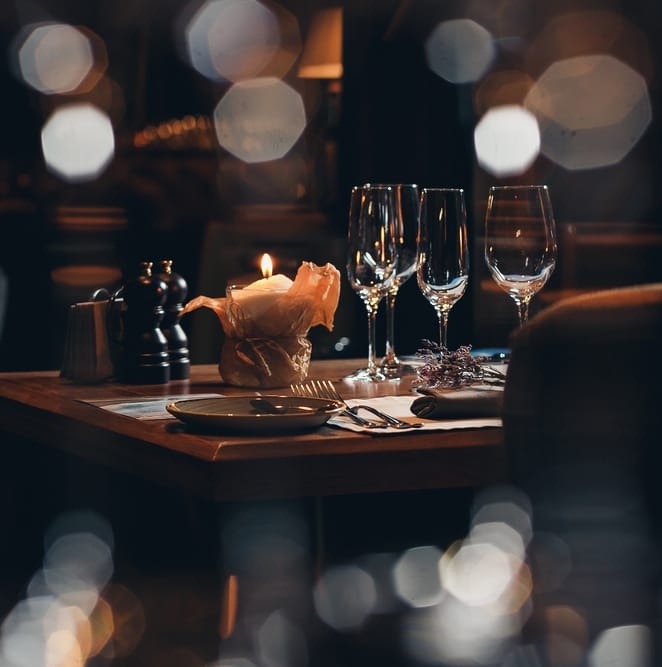You should know the importance of “table turnover rate” no matter if you are a novice or a veteran in the F&B industry. To put it bluntly, improving the table turnover rate is to shorten the overall meal time of consumers, which includes ordering time, serving time, meal time, and checkout time. Starting from these four aspects, by combining with the actual situation of the restaurant, the table turnover rate can be raised.
1. Optimize the menu
You might see this a lot in many restaurants, where customers would read the menu over and over, but still didn’t know what to eat, which leads to a waste of time and create a poor experience for them. The menu should guide your customers on what to order so the ordering time can be shortened. The design of the menu should mainly include recommending key dishes and strategical arrangement of the pictures and texts.
When taking orders, the waiters could try to recommend dishes with similar tastes to meet customers’ needs better and recommend semi-processed dishes to shorten the cooking time.
2. Optimize the serving time
The optimization of serving time includes two aspects. One is the production time, which could be achieved by improving the production efficiency of the kitchen. The other is to shorten the time the waiter delivers the dishes to the table, which requires the restaurant to design a reasonable moving line and avoid the intersection of the staff’s moving line and the customer’s moving line. At the same time, keep the distance between the customers’ and the kitchen’s entrance to avoid crowding that can delay the speed of food serving.
3. Shorten meal time
With the premise of not disturbing customers’ meals, the restaurant design can speed up the eating time through these three main aspects.
The choice of dining table and chairs
Orange or dark yellow dining tables and chairs can induce consumer appetite. Meanwhile, the colour green and blue can reduce the fatigue of diners and help with digestion. This is the psychological advantage that colors can bring. Bright colors can make people unconsciously eat faster.
Some restaurants like to use dim and warm lighting, and the seats are so soft that people don’t want to get up after sitting down. While other restaurants use ordinary wooden tables and chairs so that customers would leave because of feeling “uncomfortable” after sitting for a long time, which will help to increase the table turnover rate of the restaurant.In short, the decoration of the restaurant should be as bright as possible and the tables and chairs should not be too comfortable, but in doing so, the products and services must keep up to compensate.
Music impacts Table Turnover Rate
Fast-paced music can stimulate customers to involuntarily increase the frequency of their eating pace. Therefore, when the customers are eating for a long time, you could play fast-paced music to “urge” them to eat faster. On the other hand, you can play some slow music during off-peak hours to let customers relax, sit for a while, and spend more money.However, the selection of music should be in line with the aesthetics of the consumer group, the rhythm should be strong, and the sound should not be too loud. If it affects the conversation of customers, the user experience will be greatly reduced.
Use service to “urge” customers who have finished dinner to leave
If you are sitting and chatting after finishing your meal, and the waiter comes over to urge you to pay or negotiate with you to ask you to leave, there is no doubt that you would not be in a good mood at that time. And you will think that the restaurant is not friendly enough. So, if the customers have finished their meal and stay for a while, what should you do?
You can remind them through some detailed services. For example, when they finish eating and start chatting for a while, the waiters could come and take away the empty dishes and ask if they want to order something else. They will be aware of the intention and choose to pay the bill and leave the establishment. In this way, there will be no bad reviews because you are not actually “asking” your customers to leave. Of course, if it doesn’t work, you could try to negotiate with the customers.
4. Optimize checkout time
To optimize the checkout time, in addition to using a scan code to pay, simplifying the payment process is also the focus of optimizing the checkout time.Even if many restaurants are using mobile payment, the entire checkout process is still like this: call the waiter to checkout – print a bill – check – go to the cashier – queue – scan the code to pay. If the restaurant applies the “tableside payment service”, the entire payment process will only take three steps. The customer proposes to pay the bill – scan the code to obtain the automatic deduction discount on the bill – online payment. Compared with the traditional checkout process, there are only three steps, and the efficiency is more than doubled.
The skills of improving the table turnover rate can be used as a reference, it cannot be copied. You must choose the appropriate method according to the situation of your own business so that it can work efficiently.

